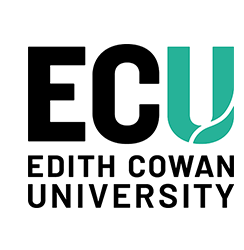Author Identifier (ORCID)
Ashan Weerakkody: https://orcid.org/0000-0002-2949-3385
Erin Godecke: https://orcid.org/0000-0002-7210-1295
Barby Singer: https://orcid.org/0000-0003-2965-705X
Abstract
Background: Modified constraint-induced movement therapy (mCIMT) improves upper limb (UL) function after stroke. Despite extensive evidence supporting its efficacy and multiple clinical practice guidelines recommending its provision, very few eligible stroke survivors receive mCIMT internationally. A multi-modal behaviour change intervention, guided by the Theoretical Domains Framework (TDF) and Behaviour Change Wheel, was implemented across a large early-supported discharge (ESD) rehabilitation service in Perth, Australia, to increase delivery of mCIMT within existing resources. As part of this iterative implementation process, qualitative data from stroke survivors, carers, clinicians and managers informed program adaptations to support sustained mCIMT delivery. This study aimed to evaluate the process of implementing mCIMT across the seven sites of this ESD service. Methods: This mixed methods process evaluation was guided by the RE-AIM QuEST framework. Data collection included patient file audits (conducted twice over six-month periods) (N = 540), clinician training attendance records, interviews with stroke survivors and carers (N = 25), and focus groups with clinicians and managers (N = 24). Quantitative data were analysed descriptively. Qualitative data were analysed using reflexive thematic analysis and mapped to the Capability, Opportunity, Motivation- Behaviour model for interviews and TDF for focus groups. Results: Reach: 31% of all stroke survivors admitted to the ESD service, including 80% of those with an UL impairment, were eligible for mCIMT. Twenty-eight facilitated workshops were conducted across all sites (four per site). Effectiveness: Clinicians reported that the behaviour change intervention improved their knowledge, skills and confidence to identify suitable stroke survivors and deliver mCIMT programs. Adoption: 17% of eligible stroke survivors were offered mCIMT and 11% received it (Audit 1). Implementation: 7/9 programs were delivered with protocol fidelity. Adaptations included ongoing/booster training sessions and resource refinement. Maintenance: 34% of eligible stroke survivors were offered mCIMT, with 26% receiving it, and all programs adhered to the protocol (Audit 2). Conclusions: mCIMT was feasibly and acceptably integrated into the ESD service, demonstrating that complex interventions can be implemented within existing resources. However, concerns persist regarding sustained delivery. Future research should investigate long-term sustainability and target policy-level change to ensure stroke survivors consistently receive evidence-based interventions.
Document Type
Journal Article
Date of Publication
12-1-2025
Volume
25
Issue
1
PubMed ID
40817048
Publication Title
BMC Health Services Research
Publisher
Springer
School
School of Medical and Health Sciences
Creative Commons License

This work is licensed under a Creative Commons Attribution-Noncommercial-No Derivative Works 4.0 License.


Comments
Weerakkody, A., Godecke, E., & Singer, B. (2025). Implementing modified constraint-induced movement therapy after stroke in an early-supported discharge rehabilitation service: A process evaluation using RE-AIM QuEST. BMC Health Services Research, 25. https://doi.org/10.1186/s12913-025-13273-9